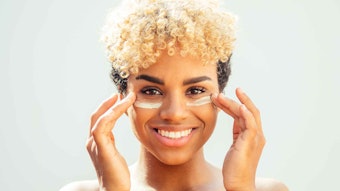Natural Dyes
Natural dyes are one of the oldest types of hair dye and were the only type of hair dye available until the mid 1800s. These dyes are, as the name implies, from natural sources. This fact has not been lost on the consumer's growing desire for more natural products. Consequently, this class of compounds is enjoying a resurgence. The extracts of plants are generally the source of the dye, and the plant is extracted with boiling water. Treatment times can be up to 60 min. and a low active content results in a large amount of required plant material. The drawbacks of natural dyes are: limited shades, weak colors, and long and messy processing.
An example of a natural dye is henna, a flowering plant used since antiquity to dye skin, hair, fingernails, leather wool and for temporary tattooing. The active is 2-hydroxy-1,4-naphthoquinone. When applied, henna imparts a strong reddish orange color to the hair. While this color results in red highlights on brown hair, it results in bright orange on gray hair. A problem is that color is not easily removed.
Indigo is a color named after the blue dye derived from the plant Indigofera tinctoria and related species. The color is between blue and violet on the electromagnetic spectrum, between 420 and 450 nm in wavelength.
There are European records of true red dyes during the Middle Ages. The dye, Caesalpinia echinata (Brazilwood), was a beautiful red, the color of burning coals (in Old French and English "braise") and was called bresil or brasil by early Portuguese traders. Additional natural dyes include chamomile, madder root and cochineal.
Metallic Dyes
Metallic dyes are vastly different from natural dyes in chemistry, source and use. These materials were based upon silver and lead salts and are generally used to gradually replace gray. These materials are primarily marketed to men and are available in a limited range of color, principally black. They are applied until the desired color is obtained.
To maximize the effectiveness of metallic dyes, daily application is required to reach the desired color and periodic application is required to maintain the color. Removal of the color can be difficult since the dye reacts with keratin sulfur.










